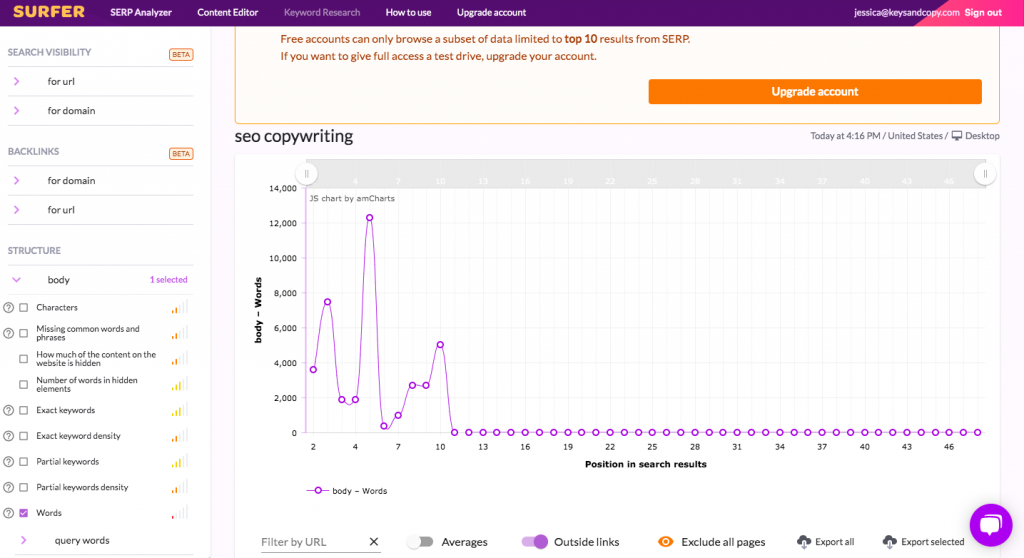Many search engine optimization pros claim to have the “secret sauce” to increase rankings and bump up a site’s traffic.
From claims that “backlinks don’t matter” to “content is king”, it seems as there is still a debate over what’s more important: technical SEO or content?
But savvy SEO pros know that SEO encompasses many different components in order to improve rankings, entice clicks, keep users on-site, and drive conversions. If you are missing one piece of the puzzle, your SEO strategy may suffer.
That’s why it’s important to marry technical SEO and content marketing to create a holistic SEO strategy. What’s the difference between the two? How do they work together? Let’s discuss.
Technical SEO vs Content Marketing
Technical SEO is the process of SEO that involves optimizing your website so it gets crawled and indexed by search engines. Some of the basic components of technical SEO include checking your HTTPS status codes, ensuring your website loads quickly, and optimizing your site for mobile devices.
Content marketing, on the other hand, is a type of marketing that involves creating content (in this case, website content) and sharing it online. Website owners can use content marketing to attract organic, paid, or social traffic to their website.
Many marketers (and business owners) see technical SEO and content as being two completely different components of SEO. In reality, they can work together congruently to drive traffic and then convert that traffic into leads, subscribers, or customers.
If you’re going to put in the work to optimize your website for search engines, then you’ll also want your content to work for you. Adding content marketing into the mix is the best way to get the most out of your SEO content.
How to Marry Technical SEO + Content
Technical SEO does the heavy lifting when it comes to making your website accessible, crawlable, and indexable by search engines. But once the organic traffic starts rolling in, you’ll need a way to convert visitors into buyers (or leads). That’s where content comes in.
Here are a few ways you can marry your technical SEO and content strategies to drive more traffic and increase conversions on-site.
[Ebook] Technical SEO for non-technical thinkers
Match Keywords to Search Intent
Google’s BERT algorithm update was big news when it came to SEO content, as Google claims it helps them better under the meaning of words used in search and then match those queries with the most relevant search results. What this means is that website owners should place even more focus on creating content that’s valuable to the user.
That starts with identifying the right keywords and matching them to the supposed user search intent. For example, if the query is “best Thailand travel guide”, the site that wants to target this keyword will need to determine whether the searcher hopes to find a guide to show them around Thailand or a helpful travel guide about the ins-and-outs of Thailand.
Further, one should identify whether the searcher’s intent is to get informed, compare options, or make a purchase.
For instance, a simple search for “digital marketing” may mean a searcher is looking to learn more about what digital marketing is, while a search for “digital marketing services” likely means they’re looking for a digital marketing agency to hire.
Once you match the search intent to the keyword, it is easier to write content that speaks to what the searcher is really looking for. And the more relevant your content is to the query, the more likely Google is to rank your content high in the search results.
Then, it’s just a matter of optimizing your title tags, URLs, headings, and internal links to further increase your chances of getting your content ranked well.
Level Up Your Internal Linking Strategy
Including internal links in your content serves many purposes.
For one, it helps disperse PageRank to other pages on your website. If you have some high-quality backlinks leading to certain pages of your site, it’s smart to include internal links to other pages that might need a boost.
Second, internal links make it easier for search engine crawlers to crawl and therefore index your site. They are able to identify what pages exist on your site and which ones are important. As a general rule, you want all of your pages to be within three clicks from the homepage.
Third, internal links direct traffic from one page on your site to another. You can effectively create a sales funnel that directs blog traffic to your service pages or a sales page. That way, users stay on your site for longer and it makes it easier for them to find (and buy) your services.
You can run an audit of your website to identify your top-ranking pages and/or the pages that are receiving the most backlinks. Then, you can include links from those pages to additional pages that might need a little PageRank juice.
Also, include contextual internal links in your blog posts to direct users to related blog posts or product pages. Again, not only does this improve indexability, but it directs users to additional content and thus keeps them on your site for a longer period of time.
Run a SERP Analysis to Determine Word Count, Keyword Usage
While there is no “perfect” word count or keyword density to determine whether your content will rank, you can run a SERP analysis to identify average word count for the top-raking articles, find LSI keywords, and otherwise set a baseline for what points you should hit with your content.

Content optimization tools like Surfer SEO and Page Optimizer Pro allow you to analyze the top 10 pages for a particular keyword, and then generate a report that includes possible competitive differentiators. These might include:
- Word count
- External links
- Internal linking
- Similar keywords used
- Popular words used
- Common backlinks
- Exact keyword usage
- Title tag phrasing
- Meta description phrasing
- URL structure
By comparing similarities and differences between the top-ranking articles, you can get a general idea of what article length you want to hit, which key terms you might want to include in your article, and whether backlinks may play a big role in getting your content to rank.
For example, if the average word count is 1500 words, you might want to hit at least 1000 in order to be competitive. If you see that all of the top ten articles include a specific H2, then you might want to include that in your article as well.
The key, then, is to beat the average by providing more value (and better structure) than what’s currently ranking.
Create Linkable Content
Backlinks remain one of the most important ranking factors, according to Backlinko’s latest 2019 study. And while link building can be a tedious task, it’s made easier when you create content that websites naturally want to link to.
There are a few different ways to go about creating linkable content. One involves scoping out your competitors’ backlinks and the other involves conducting outreach.
For the first method, use your favorite competitive analysis tool to examine where your competitors’ backlinks are coming from. You should also be able to see what pages these sites are linking to. If you feel like you can provide more value than your competitor is, write the page or post yourself and then pitch the linking websites on linking to your resource instead.
The other method involves getting ahead of the curve and creating content that has not been covered (at least not fully) yet. This may mean finding some low-competitive, high-traffic keywords and creating content that’s likely to rank quickly. Then, you can reach out to websites that might be interested in your content. Ask them if they’ll consider linking to your resource from a relevant page on their own site.
Some creative linkable content ideas include:
- How-to guides
- Infographics
- Video tutorials
- Interviews
- Listicles
- “Ultimate” guides
- Expert roundup posts
If executed correctly, this content is likely to attract backlinks naturally. However, it doesn’t hurt to circulate your new content on social media, to your email list, to publications, or other websites that might be interested in linking to it.
Technical + Content: The Perfect SEO Mix
An effective SEO strategy requires that you take a holistic approach; both in terms of attracting traffic but also converting that traffic into customers.
SEO content can help you attract more traffic to your site, and the value included in that content can help keep users on-site for longer and eventually compel them to buy, subscribe, or sign up. There’s no reason why your strategy should stop with technical SEO. Make sure you are working high-value, linkable, engaging content into the mix.

